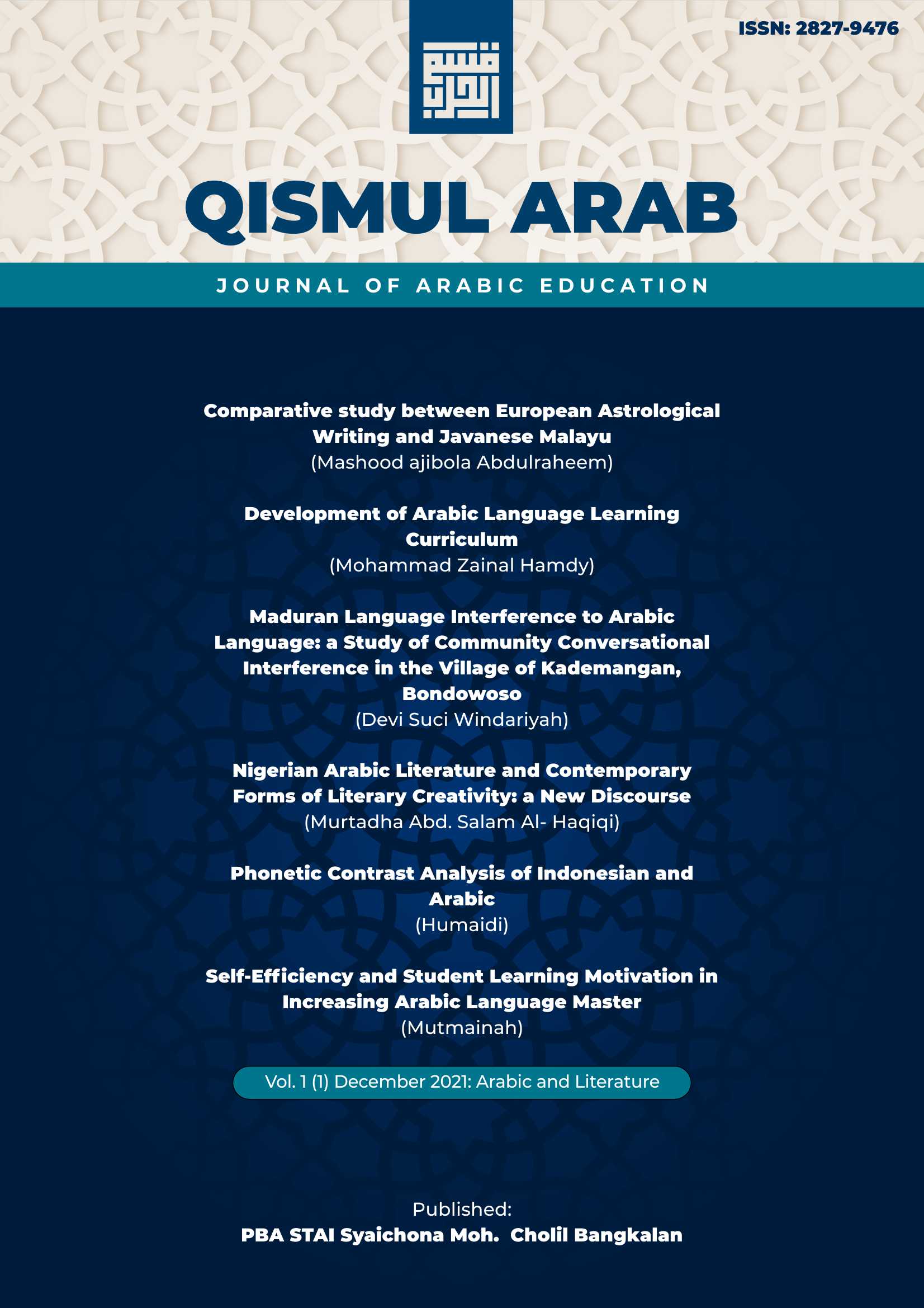Phonetic Contrast Analysis of Indonesian and Arabic
DOI:
https://doi.org/10.62730/qismularab.v1i01.5Abstract
There are several factors that cause challenges for non-Arabic speakers in learning Arabic, including non-linguistics and linguistics. These factors also affect Indonesian students who study Arabic as a foreign language. In general, Indonesian students have difficulty learning Arabic because of a number of differences between Indonesian as their first language (L1) and Arabic as the target language (L2) in almost all aspects of language. The L2 learning process that does not display its linguistic similarities in L1 creates an assumption among Arabic language learners in Indonesia that the language is difficult to learn. Therefore, this study aims to: (1) describe the phonetic similarities between Indonesian and Arabic; (2) describe the phonetic differences between Indonesian and Arabic; and (3) offer a formulation of Arabic learning patterns for Indonesian speakers learning Arabic to help them learn Arabic more easily. This study uses a comparative descriptive qualitative approach. The results of data analysis showed three findings; (1) There are 16 (sixteen) similar sounds of Indonesian and Arabic phonemes; (2) There are 7 (seven) Indonesian phonemes that are not in Arabic; and (3) There are 13 (thirteen) Arabic phonemes that are not in Indonesian. Based on these findings, it is recommended that Arabic teaching prioritize similar sounds in Indonesian and Arabic.
References
Al-Fauzân, A. (2011). Idhâ’ât li Mu’allim al-Lughah al-‘Arabiyah li Ghair al-Nâthiq?na Bihâ, Riyad: Maktabah Malik Fahd.
Alwi, H., Dardjowodjojo, S., Lapoliwa, H., Moeliono, A. M. (1998). Tata Bahasa Baku Bahasa Indonesia, Jakarta: Balai Pustaka.
Bisr, K. M. 1980). ‘Ilm al-Lugat al-‘Am (al-Aswât), Kairo: Dâr al-Ma’ârîf.
Chaer, A. (2012). Linguistik Umum, Jakarta: Rineka Cipta.
Fithriani, R. (2017). Indonesian students’ perceptions of written feedback in second language writing (Doctoral Dissertation). Retrieved from https://digitalrepository. unm.edu/educ_llss_etds/87/
Fithriani, R. (2018) ‘Discrimination behind Nest and Nnest Dichotomy in ELT Professionalism’, in the 1st Annual International Conference on Language and Literature. KnE Social Sciences, pp. 741–755. doi: 10.18502/kss.v3i4.1982.
Kementerian Pendidikan dan Kebudayaan, (2016). Kamus Besar Bahasa Indonesia, 5 ? Edition, Jakarta: Balai Pustaka.
Kridalaksana, H. (2013). Kamus Linguistik, Jakarta: PT. Gramedia Pustaka Utama.
Mu’in, A. (2004). Analisis Kontrastif Bahasa Arab & Bahasa Indonesia (Telaah terhadap Fonetik dan Morfologi), Jakarta: Pustaka Al Husna Baru.
Nasution, A. S. A. (2015). Bunyi Bahasa (‘Ilmu Al-Ashwat Al-‘Arabiyah), Jakarta:
Nasution, S. (2017). Pengantar Linguistik Bahasa Arab, Sidoarjo: CV. Lisan Arabi.
Samsuri. (1987). Analisis Bahasa. Jakarta: Erlangga.
Verhaar, J. W. M., (1993). Pengantar Linguistik
Downloads
Published
How to Cite
Issue
Section
License
Copyright (c) 2021 Humaidi

This work is licensed under a Creative Commons Attribution 4.0 International License.






